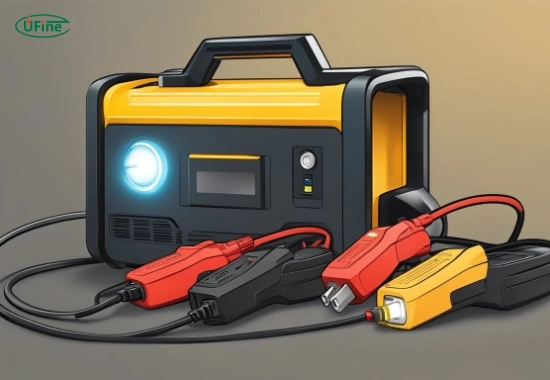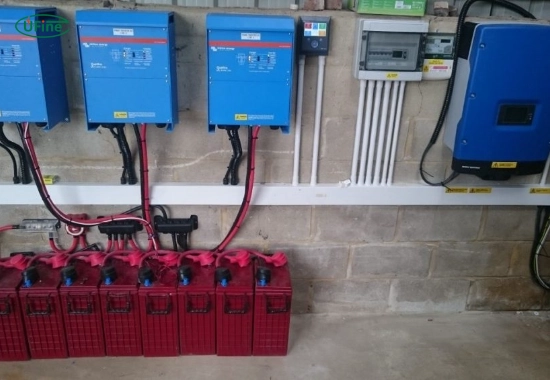Finding the best way to charge a battery generator is essential for maximizing its performance and lifespan. Efficient charging ensures that your generator is ready when you need it and helps maintain the battery’s health over time. In this article, we will explore various aspects of charging battery generators, including types of batteries, optimal practices, and common mistakes to avoid.
Part 1. What is a battery generator?
A battery generator is a portable device that stores electrical energy in batteries for later use. Unlike traditional generators that rely on gasoline or diesel, battery generators use electricity stored in rechargeable batteries. People often use them for camping, outdoor events, and as backup power sources during emergencies. Battery generators are becoming increasingly popular due to their convenience, quiet operation, and eco-friendliness.
Part 2. Why is efficient charging necessary?
Efficient charging is crucial for several reasons:
- Battery Longevity: Proper charging techniques can significantly extend the battery’s life. Batteries charged correctly can last for years without losing capacity.
- Performance: Efficient charging ensures that your generator delivers optimal power output when needed. A well-charged battery can provide reliable energy for your devices.
- Cost Savings: Reducing energy waste during the charging process can save money on electricity bills. Efficient charging uses less energy, which is good for your wallet and the environment.
Part 3. What types of batteries are used in battery generators?
Most battery generators utilize one of two main types of batteries:
- Lead-Acid Batteries: These are traditional batteries used for many years. They are generally more affordable but heavier and less efficient than newer technologies. Lead-acid batteries require regular maintenance and have a shorter lifespan than lithium-ion batteries.
- Lithium-Ion Batteries: These batteries are lighter, have a higher energy density, and offer better performance over time. They charge faster and can handle more cycles than lead-acid batteries, making them the preferred choice for modern battery generators. Lithium-ion batteries are also more environmentally friendly since they contain fewer toxic materials.
Part 4. How to charge a battery generator efficiently?
To ensure you are using the best way to charge a battery generator, consider these tips:
Use the Right Charger
Always use the charger recommended by the manufacturer. An incompatible charger can lead to inefficient charging and potentially damage your battery generator. Check the specifications carefully before plugging in.
Avoid Overcharging
Overcharging can degrade your battery’s health over time. Most modern generators have built-in protections against overcharging, but it’s still a good practice to unplug once fully charged. Keeping an eye on the charging status will help prevent this issue.
Charge at Optimal Temperatures
Batteries perform best within specific temperature ranges. Avoid charging in extreme heat or cold, as it can affect efficiency and safety. Ideally, charge your generator in a cool, dry place with moderate temperatures.
Charge During Off-Peak Hours
If you’re using grid power to charge your generator, consider doing so during off-peak hours when electricity rates are lower. This not only saves money but also reduces strain on the electrical grid.
Part 5. How does temperature affect the charging efficiency of a battery generator?
Temperature plays a significant role in how efficiently a battery generator charges:
- Cold Temperatures: When temperatures drop below freezing, chemical reactions within the battery slow down. This can lead to longer charging times and reduced capacity during use. Charging in cold conditions may also increase internal resistance, making it less efficient.
- Hot Temperatures: High temperatures can accelerate chemical reactions but can also lead to overheating. Overheating can damage the battery cells and reduce their overall lifespan. It’s best to avoid charging in direct sunlight or scorching environments.
Maintaining an optimal temperature range (usually between 50°F and 86°F or 10°C and 30°C) is crucial for maximizing charging efficiency and ensuring safety.
Part 6. What are the risks of overcharging a battery generator?
Overcharging poses several risks that can impact both safety and performance:
- Battery Damage: Overcharging can lead to excessive heat buildup within the battery cells, causing them to swell or leak electrolyte fluid. This damage can be irreversible and may require replacing the entire unit.
- Reduced Lifespan: Overcharging a battery consistently shortens its lifespan significantly. The constant stress on the cells leads to faster degradation of materials inside the battery.
- Fire Hazard: In extreme cases, overcharging can lead to thermal runaway, where excessive heat causes a fire or explosion risk. Always monitor your charger and avoid leaving it unattended for long periods.
Part 7. What types of chargers are compatible with different battery generators?
Using the correct charger is essential for ensuring efficient charging and maintaining battery health:
- Standard Wall Chargers: Most portable generators have a standard wall charger explicitly designed for their batteries. These chargers typically provide a safe voltage level suited for lead-acid or lithium-ion batteries.
- Solar Chargers: Many modern battery generators support solar charging options. Solar panels convert sunlight into electricity, allowing you to recharge your generator during outdoor activities or emergencies.
- Car Chargers: Some generators have car chargers that allow you to charge them while driving. This is particularly useful for road trips or camping trips with limited access to wall outlets.
Refer to your generator’s manual for information on compatible chargers, and only use generic chargers that may meet safety standards.
Part 8. How often should you charge your battery generator?
The frequency of charging depends on how often you use your generator:
- Regular Use: If you use your generator frequently for camping or power outages, it’s best to charge it after each use. This ensures that it’s always ready for your next adventure or emergency.
- Infrequent Use: For those who only use their generators occasionally, aim to recharge every three months. This practice helps keep the battery healthy and prevents it from losing capacity over time.
Part 9. What is the depth of discharge (DoD)?
Depth of discharge (DoD) refers to how much energy a battery uses before it is recharged. Keeping the DoD shallow—between 20% and 80%—can significantly extend the life of your battery. Deep discharging can lead to faster degradation and reduced performance over time.
Part 10. Common mistakes when charging a battery generator
Avoid these common pitfalls when charging your battery generator:
- Deep Discharging: Allowing the battery to drain completely can cause irreversible damage. It’s essential to recharge before reaching critically low levels.
- Using Incompatible Chargers: Always stick with chargers specified by your device’s manufacturer to prevent damage and ensure efficient charging.
- Ignoring Temperature Conditions: Charging in extreme temperatures can reduce efficiency and create safety hazards. Always check the environment before plugging in.
Part 11. Maintenance tips for battery generators
Regular maintenance can help ensure that your battery generator stays in top shape:
- Clean Connections: Dust and debris can hinder performance. Use a soft cloth or brush to keep connections clean and corrosion-free.
- Monitor Battery Health: Regularly check voltage levels and overall health using built-in indicators or external testers to catch issues early.
- Cycle Your Battery: Periodically fully charge and then discharge your battery to recalibrate its management system and maintain optimal performance.
Part 12. FAQs
-
How long does it take to charge a battery generator?
Charging times vary based on capacity and charger type but typically range from a few hours to overnight for full charges. -
Can I leave my battery generator plugged in all the time?
While many modern units have protections against overcharging, it’s best practice to unplug once fully charged to maintain optimal health. -
Is it safe to charge my generator indoors?
Charging indoors is generally safe as long as there is proper ventilation and no risk of overheating or fire hazards. -
What should I do if my generator isn’t holding a charge?
If your generator fails to hold a charge, check the connections first. If issues persist, consult the manufacturer or consider replacing the battery.
Related Tags:
More Articles

How to Choose the Best Floor Scrubber Battery for Commercial Cleaning?
Selecting the ideal floor scrubber battery ensures a long runtime, rapid charging, and minimal maintenance for efficient commercial cleaning operations.
Battery for Blower vs Battery for Leaf Vacuum: Which One Should You Choose?
Battery for blower vs leaf vacuum—learn the key differences in power, fit, and runtime to choose the right battery for your outdoor tool needs.
How to Choose the Right Battery for Blower?
Choosing the right blower battery? Consider voltage, capacity, chemistry & usage. This guide helps match the best battery for peak performance.
How to Choose the Best Insulated Battery Box for Lithium Batteries?
Choosing the Best Insulated Battery Box for Lithium Batteries? Discover key factors such as size, material, and safety for optimal protection and performance.
7 Critical Elements on a Lithium Battery Shipping Label
What must be on a lithium battery shipping label? Learn 7 key elements to ensure safety, legal compliance, and correct handling across all transport modes.





